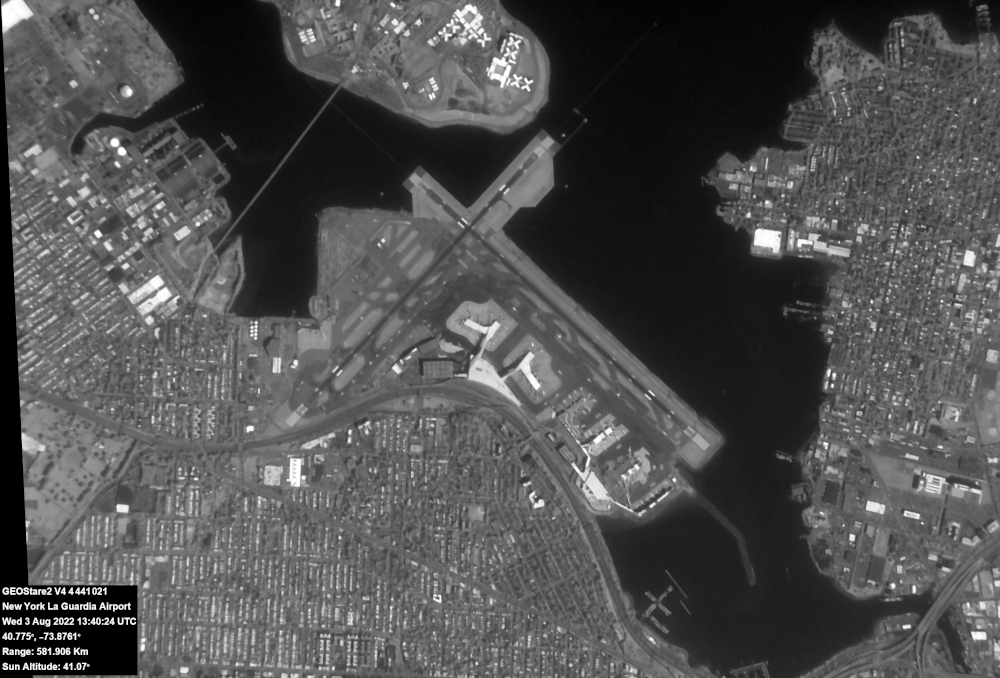Terran Orbital’s GEOStare SV2 Spacecraft Completes Commercial Imaging Contract for Lockheed Martin
GEOStare SV2 captures multiple frames of La Guardia Airport during rush hour. All images compiled and overlaid to capture on-ground activity. (Credit: Terran Orbital Corporation)
Terran Orbital Corporation (NYSE: LLAP), a global leader in satellite-based solutions primarily serving the aerospace and defense industries, today announced its GEOStare SV2 spacecraft completed a commercial data services imagery contract for Lockheed Martin.
Throughout the duration of the contract, Terran Orbital’s operations team successfully demonstrated the ability to rapidly re-task the spacecraft to assemble a catalog of thousands of images to support an independent research project led by Lockheed Martin.
GEOStare SV2’s main payload consists of two MonoTele telescopes designed by Lawrence Livermore National Laboratory and is a dual-use system suitable for both Earth Observation and Space Domain Awareness (SDA). The aim of space domain awareness is to track the satellites and debris in space to avoid collisions.
GEOStare SV2 combines Lawrence Livermore National Laboratory’s Monolithic Telescope (MonoTele) technology with Terran Orbital’s expertise producing high-reliability spacecraft. The technology was developed by Lawrence Livermore National Laboratory and Terran Orbital under a four-year, $6 million cooperative research and development agreement (CRADA) to advance compact satellites for commercial applications.
“Terran Orbital is very pleased that Lockheed Martin chose us to fulfill the need for rapid, cost-effective satellite imagery,” said Terran Orbital Co-Founder, Chairman, and Chief Executive Officer Marc Bell. “We are also grateful for the opportunity to collaborate with Lawrence Livermore National Laboratory. As always, we are thrilled to complete this contract for our partners and look forward to many more collaborations in the future, both with the GEOStare spacecraft and with other planned missions.”
“Lawrence Livermore National Laboratory is pleased to be teaming with Terran Orbital, and that our collaborative work on GEOStare is meeting some of the growing need for commercial satellite imagery,” said Lawrence Livermore National Laboratory Space Program Leader Benjamin Bahney. “We are exploring new ways to develop rapid and responsive satellite imagery, and GEOStare is a great example of what two leading technical institutions can do when they work together.”
